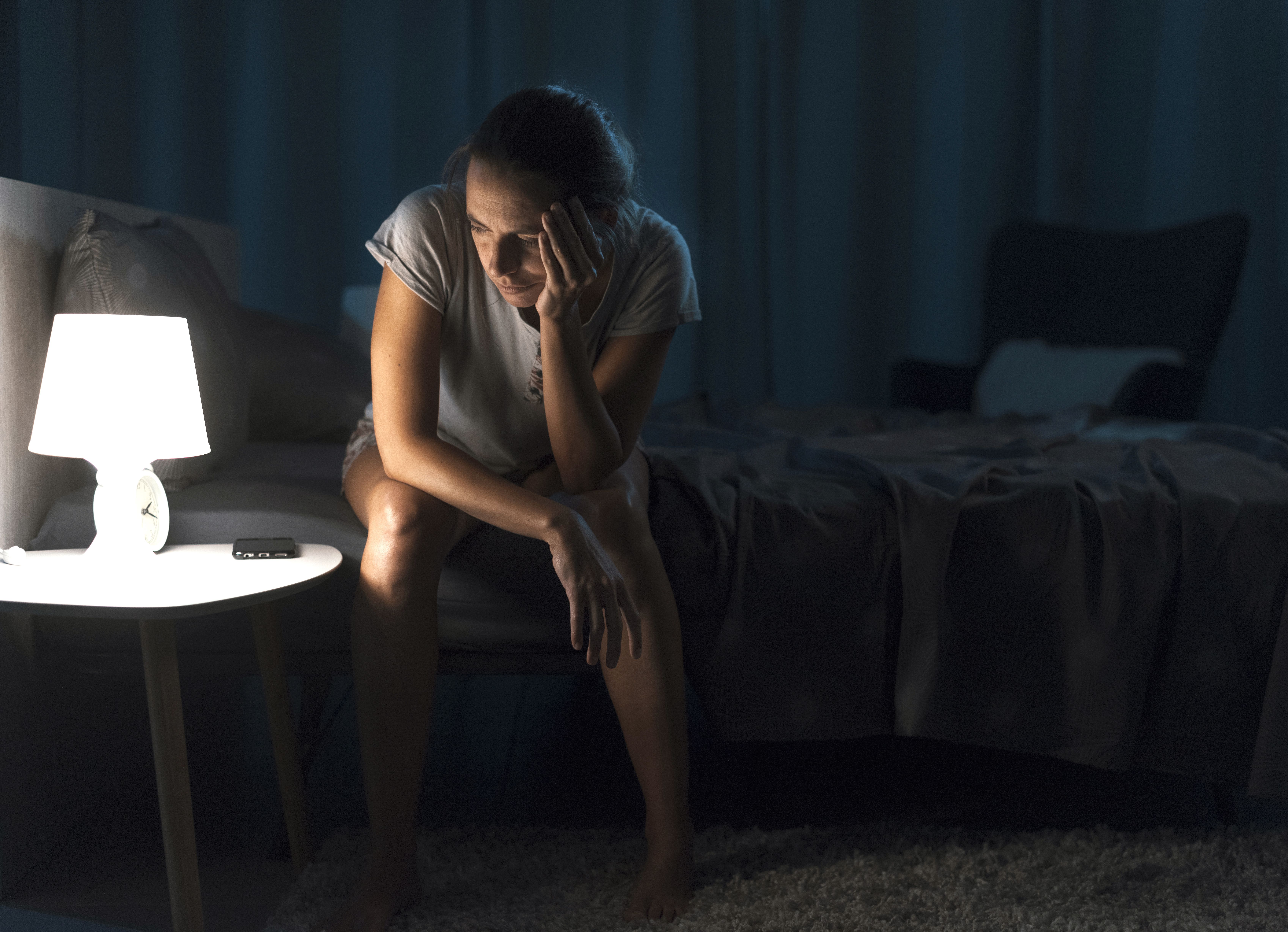News
Article
Behavioral Interventions Give Hope for Management of Insomnia Beyond the Sleep Specialist’s Office
Author(s):
Stephanie Ashraf, MD, offered clinical experience in managing insomnia at the American Medical Women’s Association (AMWA) 2024 Annual Meeting.
Management of insomnia could be done outside of a sleep specialist’s office, according to Stephanie Ashraf, MD, assistant professor of medicine at the Indiana University School of Medicine. Ashraf offered clinical experience in managing insomnia at the American Medical Women’s Association (AMWA) 2024 Annual Meeting.
Image credit: stokkete | stock.adobe.com

“I am sure many of you [health care providers] have been in a situation where you have walked out of an exam room thinking you are done with an encounter, when the patient says ‘Hey, I'm having some trouble sleeping. Do you think there's something I should take for that?’ The easy answer is trying some melatonin or here's a little bit of trazodone, these should be safe. But we should pause at that moment and get more information,” Ashraf said during the AMWA session.
Finding the proper diagnosis is essential before moving to how to treat them, because lack of diagnosis could lead to medicating for insomnia or other psychiatric conditions that are not part of the underlying problem, Ashraf noted. However, the next steps can be properly taken following the right diagnosis.
The American College of Physicians 2016 Chronic Insomnia Disorder Guidelines recommend that all adult individuals should receive cognitive behavior therapy for insomnia (CBT-I) as the initial treatment following a diagnosis of chronic insomnia disorder. Ashraf shared that this includes multicomponent intervention of cognitive therapies, sleep education, and behavioral interventions that occur over a 4- to 8-week period.
Ashraf noted other behavioral interventions to treat insomnia when CBT-I is not available, including sleep restriction and stimulus control, monitored and guided by a health care provider. The idea behind stimulus control is to strengthen the relationship between the patient and their bed.
“I generally tell patients we don't want you watching the clock. You want an internal clock...that kind of estimates when you're falling asleep. And if you get that frustrated feeling, go ahead and get out of bed and take a break. When they get out of bed, we usually recommend that they complete a relaxing activity,” Ashraf said in the session.
Sleep restriction cuts out time the patient is wasting in their bed when not sleeping. It allows the individual to be in bed for their average sleep time, with an additional 30 minutes, with the end goal of increasing the individual’s average duration of sleep.
“The idea in this is that we want to increase that sleep drive, you know, essentially with mild sleep deprivation, to help overcome some of those factors that are interfering with the patient's ability to fall asleep. Over time we increase their time they're allowed in bed as they start improving the amount of time that they're sleeping compared to their time in bed or what we call the sleep efficiency,” said Ashraf in the session.
However, Ashraf provided alternative formats for CBT-I, such as self-directed learning through books and digital CBT-I. Individuals can select a variety of engagement opportunities and their costs through digital CBT-I programs, ranging from self-directed programs to more interactive programs. Ashraf said that oftentimes the different programs provide significant improvement, but it is not guaranteed.
“There is hope for management of insomnia beyond the sleep specialist’s office and it doesn't always have to be medication. Medication is sometimes the appropriate therapy for patients either because behavioral therapies are just not an option, or they can't engage, or their current life situation doesn't facilitate them. But I don't want access to be the limiting factor. So, we know there are very behavioral interventions, as well as different delivery modes that can help to break down some of these barriers,” Ashraf said in the session.





